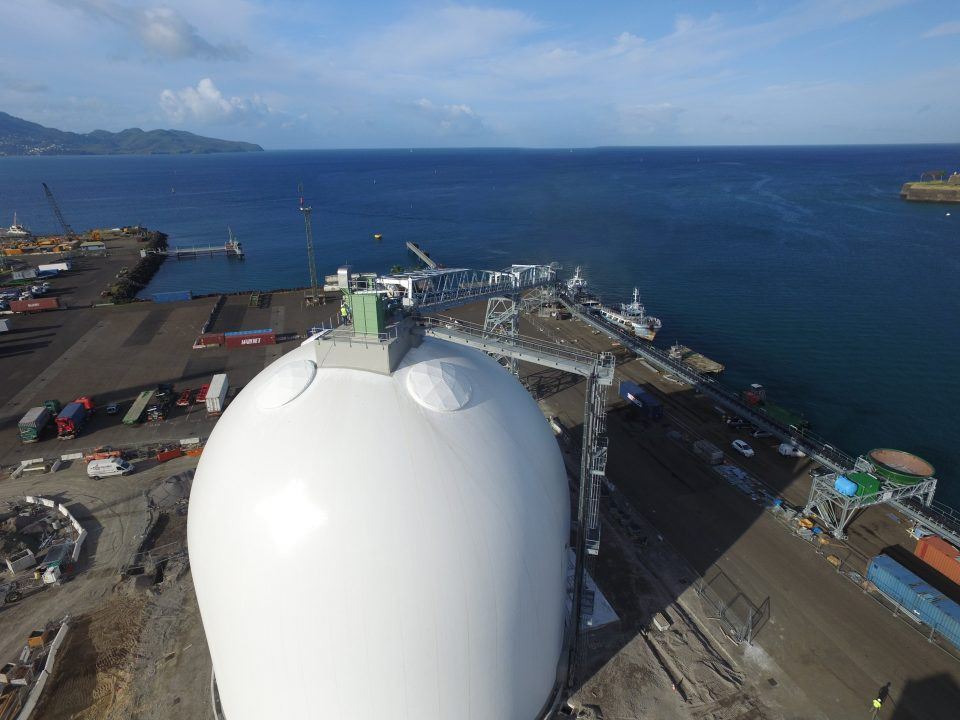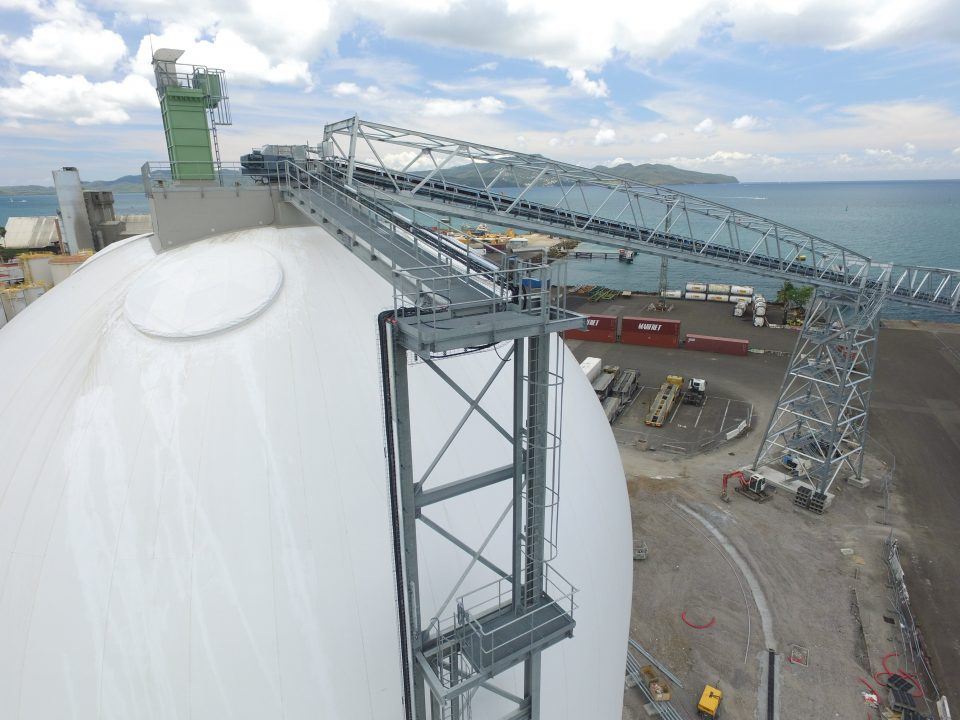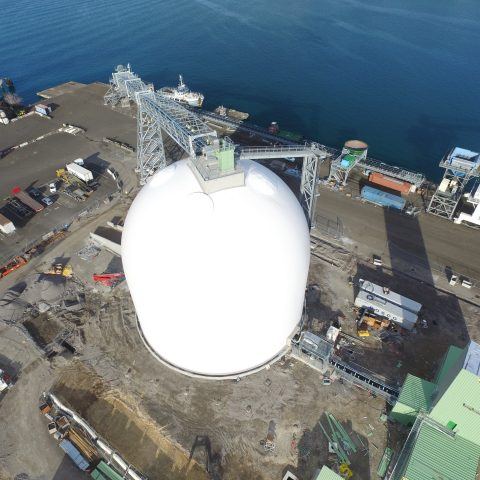
For energy-producer Albioma to build Martinique’s first 100 percent biomass power plant, the company needed wood-pellet bulk storage and ways to get product into and out of the structure.
So Albioma contracted Dome Technology to build a single DomeSilo™ standing 33 meters tall and 35 meters in diameter at the port of Fort-de-France with the ability to store as much as 19,900 metric tonnes of wood pellets.
Historically, diesel has been utilized as an energy source for the island, and in contrast Albioma will rely on environmentally friendly sugar-cane bagasse as the primary energy source for its power plant. But since available bagasse will not meet energy demands, the wood pellets will act as supplemental fuel for the Albioma plant.
The pellets are delivered to the island via ship, where a barge unloader conveys the product into the top of the dome. The pellets can then be stored as long as needed.
Dome Technology often facilitates the selection and installation of loading and unloading equipment, resulting in less work for the customer and a seamless storage and handling facility. The Albioma dome includes a barge unloader and truck load-out systems for getting product into and out of the structure.
One advantage of working with Dome Technology for this project was the ability to maximize space. Based on construction methods, materials and geometry, the dome stores more product on a smaller footprint than traditional storage options. Also, the barge-unloader geometry was designed to fit the tight space between seawall and storage dome. “The site is very small and compact, and we’re able to accommodate the small site,” engineer for Dome Technology Mike Gibbs said.
The self-emptying ability for a large portion of the volume was one factor that led Albioma to select a dome, said Albioma project director Claude Décamp. The dome achieves 75 percent live reclaim with a tunnel underneath for loadout; remaining product is reclaimed via front-end loader. The pellets are conveyed to trucks, then delivered 20 miles across the island to the Albioma plant.

Another consideration was safety. A nitrogen system pacifies product and prevents fire that would threaten other facilities located on the busy port. Dome Technology supplied and installed the nitrogen-gas piping system below the concrete floor for the customer’s own nitrogen system to be connected for pacifying the product when stored for longer periods. In accordance with European directives, the team designed and installed ATEX 22 explosion-relief openings and an ATEX 22-rated lighting on the inside of the dome apex.
Construction began with soils remediation and deep-piled foundations. “We were on the port area and so close to the water, and so the weight of the dome and stored product was a concern there,” Dome Technology lead foreman Eric King said. The soil was especially compromised as much of the “ground” had been placed there years before and was filled with coral and dumped material.
The Dome Technology team excavated two meters of surface material and replaced it with crushed stone. Five hundred stone piles were then installed.
Establishing a solid foundation met the demands of local conditions, where cyclonic and seismic events are common and poor soil is the norm; in fact, two earthquakes took place during construction. “The structure can withstand 200-plus mph winds, and being the structure it is, the dome can withstand an earthquake as well,” King said, adding that the island is home to an active volcano too.
Though flat storage was an option, the large size as well as anticyclonic and anti-seismic accommodations and soil remediation would have required a very high investment cost. The dome was selected for its smaller footprint, less-expensive foundation, lower overall cost and higher storage capacity, Décamp said.
Editor’s note: The preceding is an excerpt from a feature published in the July 2017 issue of Dry Cargo International. To access the full text, visit Dry Cargo International.

